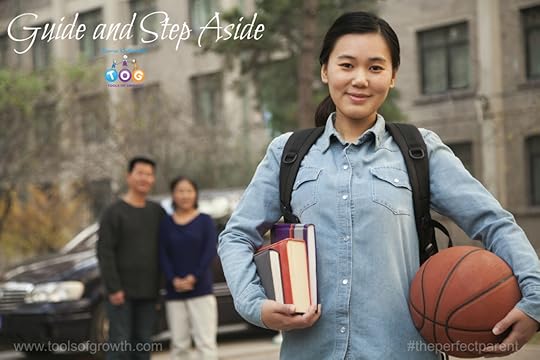Letting Go: Guide and Step Aside
When my kids were halfway through their junior year of high school, we started to notice their struggle for independence. As talks of college applications became more frequent, the idea of leaving home and taking care of themselves understandably grew more real to them. They both pushed for easier curfews and for the freedom to make more of their own decisions. Even though they had started driving and were beginning to break out of our constant supervision and direction, it was tough for my husband and me to let go.
Sometimes I would say, “I think it’s too soon to let her go completely. After all, she is only seventeen. She has just started driving.”
My husband would reply, “You have to start now. It’s good preparation for going off to college.”
At other times, especially after one of them had made a mistake, my husband would say, “Maybe he is not ready to manage his own life completely yet. Let’s give him independence in small chunks and see how he does.”
“We have to start letting go now,” I would respond, “so he can fall and learn while he is still at home and we are around to help him get back up.”
There is no one correct answer. Giving our children their independence and letting go of them step by step has to be based on each child’s personality. While they’re under our wing, we must give our children more room to be independent. This is the only way we can be reassured that they will be able to take care of themselves when they do leave home.
Letting go of our children is one of the biggest challenges that parents face. It is particularly difficult when we experience, firsthand, the transition of our teenage children into young adults. The only way we can show them our unconditional love at this age is by keeping the doors of communication wide open and reminding ourselves to guide and step aside. Even though this can be the most trying part of raising children, it’s the only way to prepare them to thrive on their own. Yes, they will stall and fall, but this will also teach them to stand tall. Stay at arm’s length, watch them closely, and stay out of their way – not to let go completely but to step aside and watch from the sidelines. Stepping into young adulthood is a process of self-discovery for them. If our kids want to be the captains of their own ships, we have to be prepared to be the co-captains and be there to help them navigate through the big waves.
When they do fall, curb yourself from saying anything resembling I told you so or from calling them “irresponsible.” Instead, put your unconditional love into words by saying, “That’s okay. This is how you will learn to take care of yourself and become more responsible. I know this hurts,” you might say. “I’ve been there. But this is how you will learn. I know you can do this.”
Encourage them to learn from their mistakes. Help them get back on their feet, and then hand over the steering wheel again. Guide and step aside is a parenting model that every parent should practice. It is the ultimate expression of letting go and of unconditional love – one that nurtures their resilience and self-reliance and anchors their inner perfection.
Read more in The “Perfect” Parent.
The post Letting Go: Guide and Step Aside appeared first on Tools of Growth.




